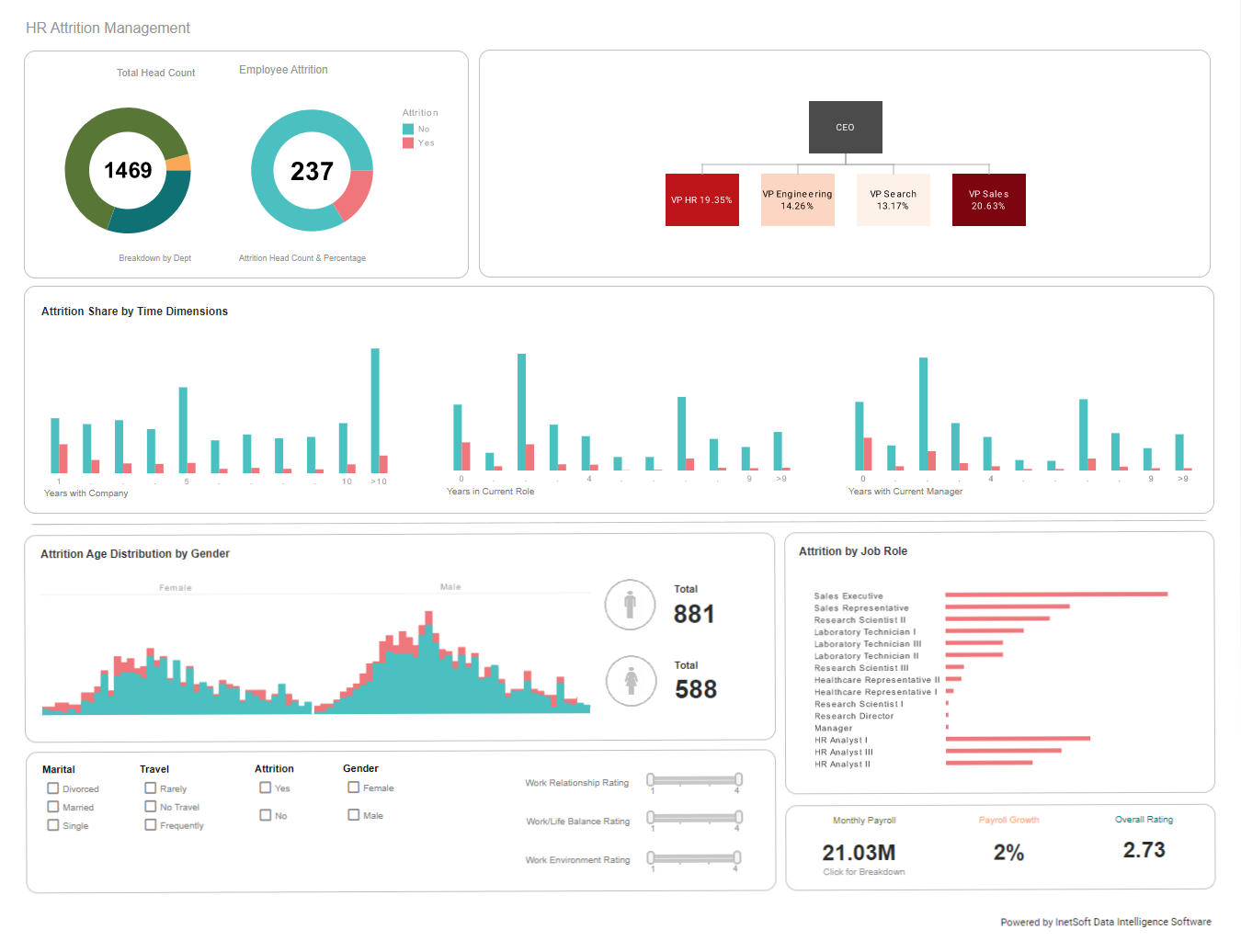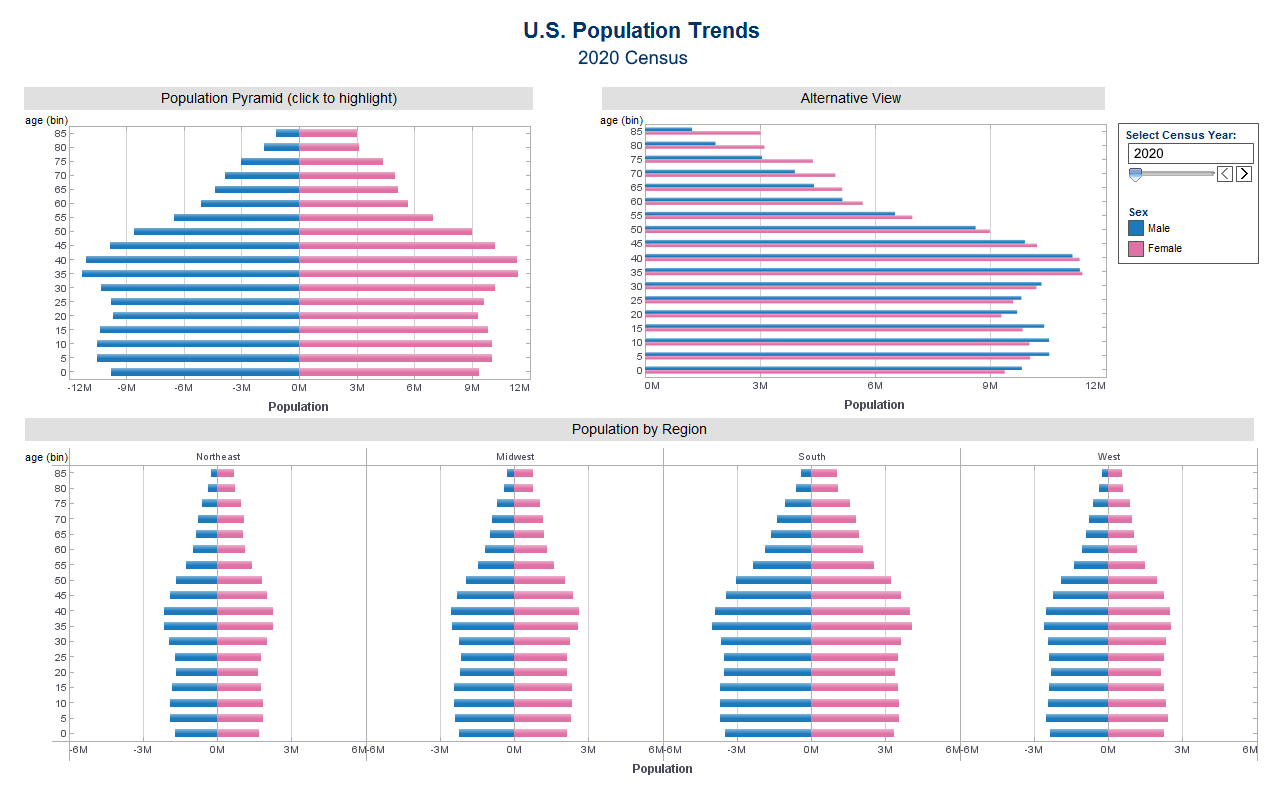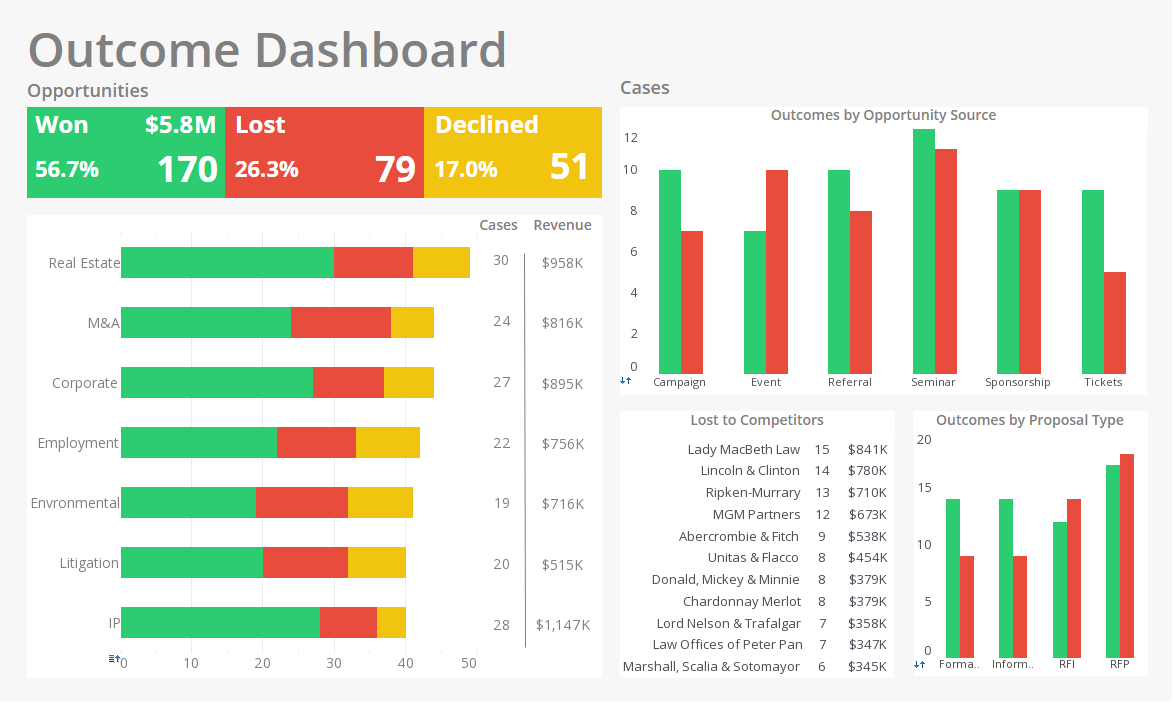Looking for a Free Reporting Software Evaluation?
Are you looking for a reporting application that can track and display information through point-and-click, easy to understand visual analyses, without spending big? Are you trying to organize and report your company's information in the form of dashboards and scorecards? If so, InetSoft's free Individual or Business Account may be just the solution you're seeking.
InetSoft's free Individual and Business Account are free easy to use versions of InetSoft's leading-edge data visualization application. Designed for business users, the free service is perfect for individual analysts or departmental workgroups, allowing users to quickly share business information and insights with team members.
InetSoft's simple, intuitive interface ensures that you do not have to be a tech or IT professional to be able to create impactful and meaningful dashboards for your business.

A Great Way to Get Started
InetSoft's free accounts are a great way to get started in dashboarding. The easy to use interface gives you the tools that you need to understand your business better and move forward in making the right business decisions. If you like what you get from the free version, you can easily upgrade for more users with additional license purchases, or upgrade to an enterprise-class version..
By upgrading to the commercial version, you'll gain access to unlimited user licensing, as well as greater data source connectivity. Advanced customization options, flexibility, and IT-friendliness, along with access to a wider array of enterprise data source types, set InetSoft apart from the competition.
Data Mashups Across Multiple Platforms
The commercial version allows your users to create real-time data mashups that easily combine data from multiple sources including JDBC, Microsoft Excel, and .csv files.More enterprise applications and database types, including Hadoop. Data mashup empowers power-user, analyst, or business person who normally studies dashboards or sifts through reports with underlying data. Not only they can repurpose data like Lego blocks for unanticipated querstion. But they can also introduce new data with mash up and bring self-service to a different level.

Get Started with InetSoft's Free Reporting Software Evaluation
InetSoft’s free reporting software evaluation is designed to answer a simple question with real evidence: Will this actually work for our data, our users, and our constraints? Instead of a glossy demo reel, the evaluation gives your team a hands-on, production-style environment where you can build reports, test data pipelines, and validate performance under your own security and governance rules. The experience is equal parts sandbox and guided workshop—fast to start, but structured enough to surface deal-breakers early.
What You Get on Day One
The evaluation space includes a fully functional instance of InetSoft’s analytics/reporting service with role-based access control, sample data packs, and a starter library of templates (tabular reports, pixel-perfect statements, KPI scorecards, and cross-filters). You’ll also have connectors for common sources—SQL databases, cloud warehouses, spreadsheets, and REST APIs—so you can plug in one or two live datasets right away. Most teams start by recreating a familiar monthly report, then layer in drill-downs and parameters to stress-test interactivity.
Guided Onboarding, Not Hand-Holding
During week one, a solutions engineer runs a short discovery to map three things: the core metrics you must reproduce, the data sources required, and your access model (who can see what). From there, you get a lightweight success plan: a handful of reports to rebuild, a simple data mashup to prove transformation capability, and an embed or export flow to test delivery. The vibe is practical and goal-driven—no boilerplate training marathon, just enough coaching to keep momentum high.
Drag-and-Drop Authoring, With Guardrails
Business users can jump straight into the drag-and-drop report designer to assemble tables, pivots, and charts without writing code. Data pros can work one layer down in the pipeline to transform and join sources, enforce naming conventions, and set reusable calculations. The two layers are deliberately tied together: authors build on curated fields and definitions, while admins lock down joins and data lineage to preserve consistency. It’s flexible, but it doesn’t devolve into spreadsheet chaos.
Your Data, Your Security Model
The evaluation is built to reflect real security constraints. You can configure single sign-on, map groups to roles, and apply row-level filters (for example, region managers see only their territories). If you’re validating compliance posture, you can turn on audit logs and export activity for review. The point is to ensure that what looks great in a demo still looks great when legal and security teams take a hard look.
Performance and Scale Checks
Reports aren’t helpful if they crawl. The evaluation encourages you to test real-world load: run a large dataset through a few representative queries, schedule a generation burst (e.g., end-of-month statements), and capture load times. Because the service is containerized, you can simulate scale by increasing replicas and verifying that concurrency stays snappy. You’ll also test caching behavior and incremental refresh so heavy reports don’t compute from scratch every time.
Delivery: Exports, Embeds, and Schedules
Most organizations judge a reporting tool by its last mile. The trial environment lets you embed reports into portals via web components, schedule PDF/Excel bursts with parameterized filters, and push snapshots to secure folders or email groups. If you have a customer-facing portal, you can validate how white-labeling and row-level scoping work together—critical for multi-tenant delivery.
What Evaluation Success Looks Like
- Recreated “must-have” reports: At least two high-value reports match layout, numbers, and filters one-for-one.
- Data pipeline proven: A live source is connected, transformed, and refreshed on schedule without manual babysitting.
- Security validated: SSO works, roles are mapped, and row-level rules are enforced across reports and exports.
- Delivery paths confirmed: One embed, one scheduled distribution, and one export workflow run reliably.
- Author confidence: A business user builds or edits a report end-to-end without IT intervention.
Why This Evaluation Stands Out
Two things differentiate InetSoft’s approach. First, the tooling is light on overhead, so you’re not wrestling with infrastructure just to run a pilot—spin up, connect, build, measure. Second, the evaluation pushes for honest outcomes: if a data join will explode cardinality or a filter logic will break security, you’ll discover it early, with help to fix or design around it. The process respects time and attention, which is rare in trials that bury teams under “training” while avoiding the messy parts.
Who Should Be Involved
The most successful evaluations include a product owner (sets goals and keeps scope tight), a data engineer (connects sources and sanity-checks transformations), and one or two business authors (validate usability and layout fidelity). If you deliver reports to external customers, invite a representative user to review embeds and exports. Their feedback on speed, clarity, and access is invaluable—and tends to be candid.
Use the evaluation to answer uncomfortable questions. Can we preserve our exact revenue recognition logic? What happens when a new data column appears unannounced? How do we lock down ad hoc fields so two teams don’t publish different definitions of the same KPI? Push the tool—good software holds up under pressure, and good teams appreciate the transparency.
Outcome You Can Take to the CIO
By the end of the free evaluation, you should have more than a thumbs-up; you should have evidence: screenshots of matched reports, timing charts for heavy queries, notes from security sign-off, and a short list of open risks. That dossier is what turns a promising demo into a confident decision. And if the verdict is yes, you’ve already built the first slice of your production rollout—authors trained, pipelines running, and delivery paths proven.


